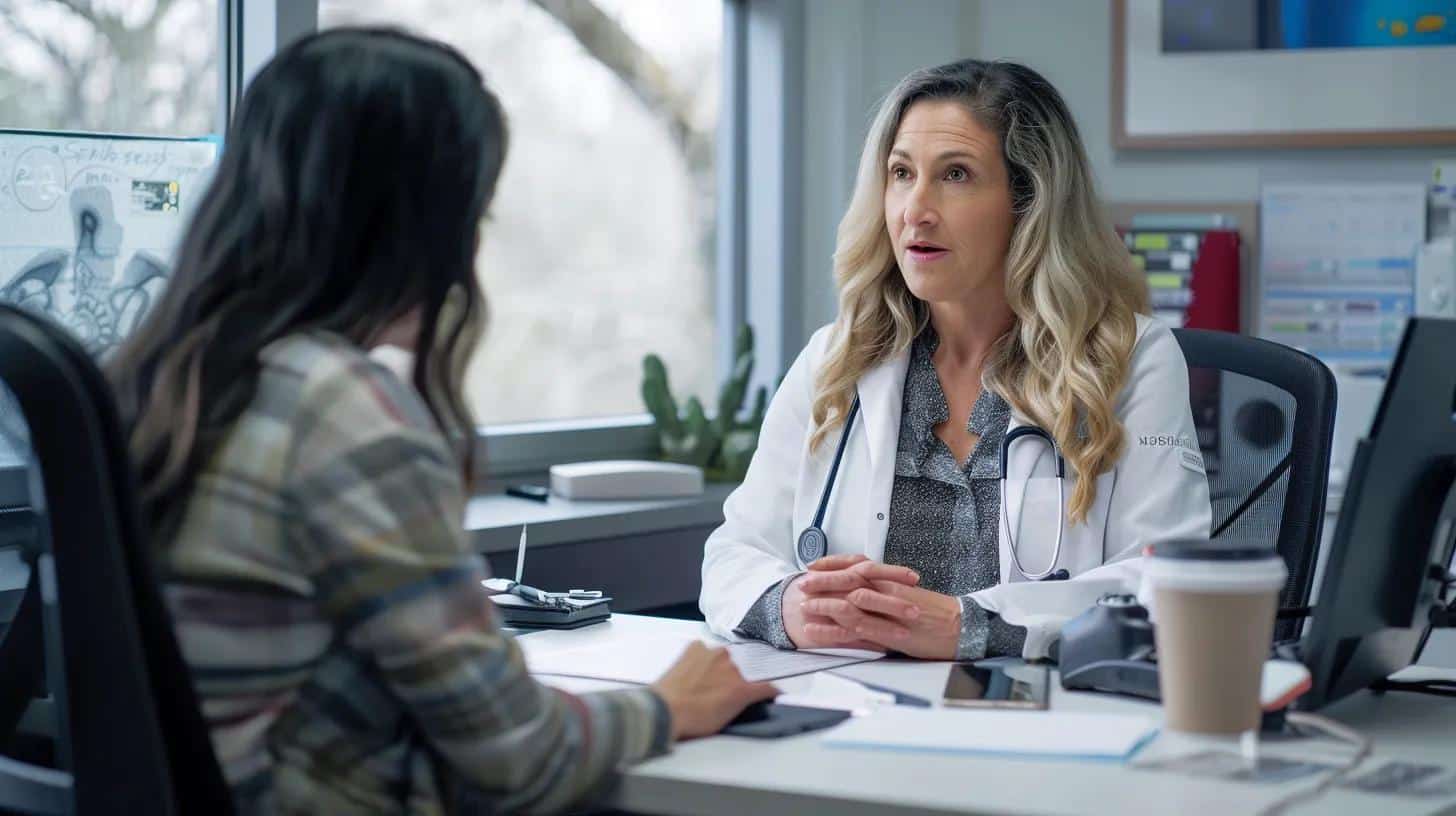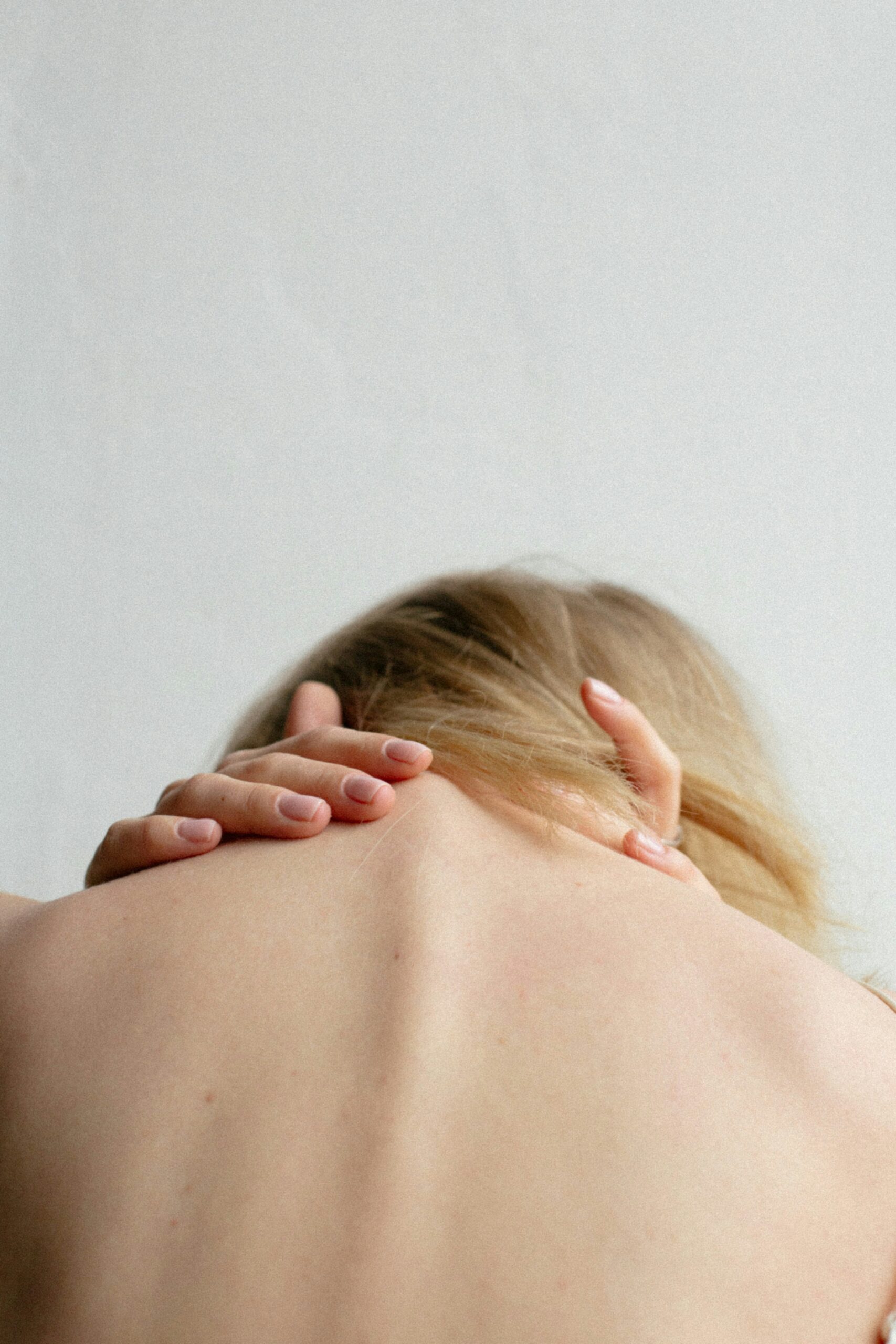Endometriosis is a chronic condition in which tissue similar to the uterine lining grows outside of the uterus, causing various painful symptoms. Many women first experience unexplained pelvic discomfort that disrupts daily life. Pain is not always confined to the pelvis—it can radiate, change with the menstrual cycle, and mimic other conditions. Recognizing these pain signals early is essential for proper diagnosis and management. This article provides an overview of endometriosis pain symptoms that should not be ignored.
By understanding these symptoms, patients can better communicate with their healthcare providers and seek timely treatment options such as laparoscopy, hormonal treatments, or surgery. Dr. Rachael, a specialist in endometriosis care, stresses that early diagnosis and a multifaceted treatment plan are vital. We explore common and severe pain symptoms, differentiate endometriosis pain from other conditions, and discuss management strategies that help alleviate discomfort and improve wellbeing.
Key Takeaways
- Endometriosis pain can appear as pelvic, abdominal, menstrual, or radiating discomfort.
- Recognizing differences between common and severe symptoms can prompt early intervention.
- Differentiating endometriosis pain from conditions such as IBS or ovarian cysts is crucial.
- Management strategies include medications, lifestyle changes, and support resources.
- Comprehensive diagnostics such as laparoscopy are key to confirmation and treatment planning.
What Are the Most Common Pain Symptoms of Endometriosis?

Endometriosis often presents with pelvic pain linked to the menstrual cycle, intense cramping that may begin before or extend after menstruation, lower back pain, and general abdominal discomfort. The pain can vary in intensity and may appear or worsen as the lesions progress.
How Does Pelvic Pain Manifest in Endometriosis?
Pelvic pain is typically chronic and deep, often becoming more severe during menstruation and persisting on non-menstrual days. Inflammation, scarring, or adhesions contribute to the pain, which may worsen with physical activity or prolonged sitting. This constant ache should be distinguished from normal menstrual cramps.
What Types of Abdominal Pain Are Linked to Endometriosis?
Women may experience either diffuse or localized abdominal pain—ranging from dull aches to sharp, intermittent discomfort. Inflammation from endometrial implants, sometimes affecting bowel or peritoneum function, can also cause bloating or cramping that mimics gastrointestinal issues.
How Is Pain During Menstruation Different With Endometriosis?
Menstrual pain in endometriosis is more severe and prolonged compared to typical cramps. It may start days before menstruation and persist afterward, often unresponsive to common over-the-counter medications, thereby hindering daily activities.
What Is Pain During or After Intercourse in Endometriosis?
Dyspareunia, or pain during or after intercourse, is common. Lesions or adhesions near the pelvic organs may be irritated during sexual activity, leading to deep, persistent pain that affects both physical comfort and emotional wellbeing. Open discussion with healthcare providers is important for proper management.
Which Pain Symptoms Indicate Severe or Advanced Endometriosis?

In advanced cases, pain may intensify and signal that endometrial tissue has spread to other organs, increasing the risk of structural damage. Early recognition of these severe symptoms is critical for timely intervention.
How to Recognize Chronic Pelvic Pain That Should Not Be Ignored?
Chronic pelvic pain that lasts six months or more, does not respond to standard painkillers, and interferes with daily activities is a warning sign. This persistent discomfort calls for further diagnostic investigation, such as laparoscopy, to assess lesion spread.
What Does Pain Radiating to the Lower Back or Legs Suggest?
Radiating pain from the pelvis to the lower back or legs may indicate nerve involvement or deep infiltrative endometriosis. This type of pain, similar to sciatica, often comes with sensations of tingling or numbness, warranting comprehensive evaluation with imaging studies.
When Is Pain During Bowel Movements or Urination a Warning Sign?
Sharp pain during bowel movements or urination can indicate that endometrial tissue is affecting the urinary tract or intestines. Such pain, especially when accompanied by bloating or altered bowel habits, should prompt further investigation, potentially through minimally invasive laparoscopy.
How Can You Differentiate Endometriosis Pain From Other Conditions?

Differentiating endometriosis pain from conditions like IBS, ovarian cysts, or fibroids relies on understanding distinct patterns. Endometriosis pain typically follows a cyclical pattern tied to menstruation, with chronic pelvic pain and dysmenorrhea that are less common in other conditions.
What Are the Key Differences Between Endometriosis Pain and IBS?
While both conditions can cause abdominal cramping and bloating, endometriosis pain is closely linked to the menstrual cycle and often includes chronic pelvic pain and dyspareunia—features generally not seen in IBS.
How Is Endometriosis Pain Different From Ovarian Cysts or Fibroids?
Pain from ovarian cysts generally appears suddenly during rupture or torsion, and fibroids may cause a constant ache. In contrast, endometriosis pain is chronic, worsens with menstruation, and can be associated with systemic symptoms like fatigue.
When Should You Consider Endometriosis Over General Pelvic Pain?
If pelvic pain is severe, unresponsive to standard analgesics, cyclical in nature, or accompanied by painful intercourse or radiating discomfort, endometriosis should be considered. Advanced testing including imaging and laparoscopy can help confirm the diagnosis.
What Are the Less Common but Important Pain Symptoms to Watch For?

Apart from the typical pain symptoms, some less common signs may indicate spreading endometriosis. Recognizing these can lead to earlier diagnosis and treatment.
Can Endometriosis Cause Pain in the Upper Abdomen or Chest?
Although rare, endometriosis can affect areas outside the pelvis, such as the upper abdomen or chest. This may occur when cells migrate via the lymphatic system, causing irritation in regions like the diaphragm or chest wall. Cyclical upper abdominal discomfort should be evaluated for extrapelvic involvement.
What Is the Significance of Painful Ovulation in Endometriosis?
Some women experience exceptionally painful ovulation (mittelschmerz) due to inflammatory adhesions. This disproportionate pain during ovulation can signal underlying endometriosis and may disrupt normal ovarian function.
How Does Nerve Pain or Tingling Relate to Endometriosis?
When lesions involve or irritate nearby nerves, the resulting pain may be electric or burning and can spread to adjacent areas. This nerve-related pain indicates a deeper, more complex form of endometriosis that might require specialized treatments such as nerve blocks.
When Should You Seek Medical Help for Endometriosis Pain Symptoms?

It is crucial to know when to seek immediate medical attention. Certain pain patterns and additional symptoms demand urgent evaluation to prevent complications and preserve fertility.
What Pain Levels or Patterns Require Immediate Medical Attention?
Pain that is severe enough to disrupt daily life, or is accompanied by fever, weight loss, nausea, or vomiting, requires prompt care. Rapidly escalating, unremitting pelvic pain may indicate complications such as ovarian torsion or extensive adhesions, and should be evaluated immediately.
How Can Early Diagnosis Improve Pain Management?
Early diagnosis can lead to more effective pain management by enabling timely interventions such as laparoscopy, which can remove implants and tailor treatments including hormonal adjustments, dietary changes, and physical therapy. Addressing the condition early reduces its long-term impact.
What Questions Should You Ask Your Doctor About Endometriosis Pain?
When consulting your healthcare provider, ask specific questions like: – “What diagnostic tests will confirm endometriosis?” – “How do my pain patterns relate to the progression of the condition?” – “What treatment options can manage my symptoms effectively?” – “When should surgical options such as laparoscopy or hysterectomy be considered?”
How Are Endometriosis Pain Symptoms Diagnosed and Assessed?

Diagnosis involves both a thorough review of symptoms and objective medical tests. Physicians combine patient history, physical examinations, imaging studies, and sometimes surgical approaches to determine the extent of endometrial lesions.
What Role Do Symptom Checkers and Pain Diaries Play?
Keeping a detailed diary of pain—its intensity, frequency, and triggers—provides valuable insights for diagnosis and treatment customization. This documentation helps reveal patterns that might not be apparent during brief clinical visits.
How Do Doctors Differentiate Endometriosis Pain Through Exams and Imaging?
A pelvic exam may reveal tenderness or irregularities, while imaging techniques such as ultrasound or MRI can detect cysts and adhesions. Specialized imaging may be used to identify deep infiltrative endometriosis, offering further clarity in diagnosis.
When Is Laparoscopy Recommended for Confirming Endometriosis?
Laparoscopy is the gold standard for endometriosis diagnosis. It is recommended when non-invasive tests are inconclusive or when symptoms are severe. During laparoscopy, surgeons can directly view and treat lesions, often improving pain outcomes immediately.
What Are Effective Ways to Manage and Relieve Endometriosis Pain?

Managing endometriosis pain typically requires a multimodal approach that addresses both physical and emotional aspects. Effective management strategies aim to reduce pain, slow lesion progression, and improve quality of life.
Which Pain Relief Options Are Commonly Recommended?
Common treatments include NSAIDs to reduce inflammation and pain, and hormonal treatments (oral contraceptives, progestins, GnRH agonists) to regulate estrogen and control menstrual symptoms. In severe cases, laparoscopy can be used not only for diagnosis but also for lesion removal. Complementary therapies such as acupuncture, physical therapy, and dietary adjustments may also help.
How Can Lifestyle Changes Help Reduce Pain Symptoms?
Incorporating regular exercise such as yoga or Pilates, making dietary modifications to reduce inflammation (including omega-3 rich foods), and managing stress with mindfulness or cognitive behavioral therapy can alleviate pain. Adequate sleep is also essential for overall healing and symptom reduction.
What Support Resources Are Available for Pain Management?
Beyond medical treatments, support groups, online forums, webinars, and literature from specialized clinics provide valuable information and community connection. Mental health support through counseling can help manage the emotional challenges that often accompany chronic pain.
Additional Detailed Lists
List of Common Medications for Endometriosis Pain Management
- NSAIDs – Inflammation Reduction NSAIDs such as ibuprofen and naproxen reduce inflammation and alleviate pain by blocking inflammatory chemicals.
- Oral Contraceptives – Hormonal Regulation These help stabilize menstrual cycles and reduce flow, lessening endometriosis-related pain.
- Progestins – Tissue Stabilization Progestins decrease estrogen levels, slowing the growth of endometrial-like tissue.
- GnRH Agonists – Lesion Suppression These induce a temporary menopause-like state to shrink lesions.
- Antidepressants – Mood and Pain Modulation Low-dose antidepressants may help manage chronic pain and improve mood.
List of Lifestyle Modifications Beneficial for Endometriosis
- Regular Exercise – Enhanced Blood Flow Physical activity increases circulation and reduces pelvic congestion.
- Dietary Adjustments – Anti-Inflammatory Foods A diet rich in fruits, vegetables, whole grains, and omega-3 fatty acids can reduce inflammation.
- Stress Management – Relaxation Techniques Practices like yoga, meditation, and deep breathing help lower stress levels.
- Adequate Sleep – Restorative Healing Consistent sleep patterns support body repair and reduce pain intensity.
- Avoiding Triggers – Identifying Harmful Foods Eliminating triggers such as caffeine, processed foods, and alcohol may alleviate symptoms.
List of Diagnostic Tools and Procedures for Endometriosis
- Pelvic Exam – Initial Assessment A physical exam to check for tenderness and irregularities.
- Ultrasound – Imaging Lesions Ultrasound can detect cysts and lesions, though not all cases are visible.
- MRI – Precise Lesion Mapping MRI provides detailed images, useful for identifying deep infiltrative endometriosis.
- Laparoscopy – Definitive Diagnosis Direct visualization and possible biopsy during laparoscopy confirm diagnosis.
- Pain Diaries – Monitoring Symptom Patterns Detailed records of pain assist in forming an accurate diagnosis.
Table of Endometriosis Pain Symptom Attributes
Before reviewing the table below, note that understanding each symptom’s attributes can assist in identifying the condition.
The table outlines the main attributes of endometriosis pain symptoms along with corresponding triggers, impacts, and diagnostic value.
Table of Endometriosis Treatment Options and Their Benefits
This table provides an organized view of common treatment options for endometriosis, highlighting their mechanisms, benefits, and appropriate use.
Final Thoughts
Endometriosis is a multifaceted condition with a range of pain symptoms that can significantly affect quality of life. From chronic pelvic pain and menstrual discomfort to pain during intercourse and radiating nerve pain, understanding these symptoms is crucial for effective management. Early diagnosis through techniques like laparoscopy combined with a balanced approach of medical treatments and lifestyle modifications offers the best chance at alleviating pain and improving overall wellbeing.
Frequently Asked Questions
What are the early signs of endometriosis pain?
Early signs include severe menstrual cramping, chronic pelvic pain, and pain during intercourse. These symptoms may worsen over time and can also include gastrointestinal disturbances, indicating the need for further evaluation.
Can endometriosis cause pain in areas other than the pelvis?
Yes, endometriosis can cause radiating pain in the lower back, legs, or even the upper abdomen. This occurs when lesions affect nerves or extend to surrounding tissues, requiring detailed evaluation.
How is laparoscopy used in diagnosing endometriosis?
Laparoscopy is a minimally invasive procedure that allows doctors to inspect the pelvic organs for endometrial implants. It is considered the gold standard for diagnosis, especially when non-invasive tests are inconclusive.
What lifestyle changes can help manage endometriosis pain?
A balanced diet rich in anti-inflammatory foods, regular exercise, adequate sleep, and stress management techniques like mindfulness can significantly reduce pain and improve overall wellbeing.
When should a woman with endometriosis pain seek emergency medical attention?
Seek immediate care if pain becomes suddenly severe, is accompanied by fever, vomiting, or rapid health deterioration, as these may signal complications requiring urgent intervention.
Are there complementary therapies available for endometriosis pain management?
Yes, treatments such as acupuncture, physical therapy, and psychological support can reduce stress, improve circulation, and enhance quality of life when used alongside conventional treatments.
What role do symptom checkers and pain diaries play in managing endometriosis?
Keeping a detailed symptom diary helps track pain intensity, frequency, and triggers, which provides essential information for accurate diagnosis and individualized treatment planning.

